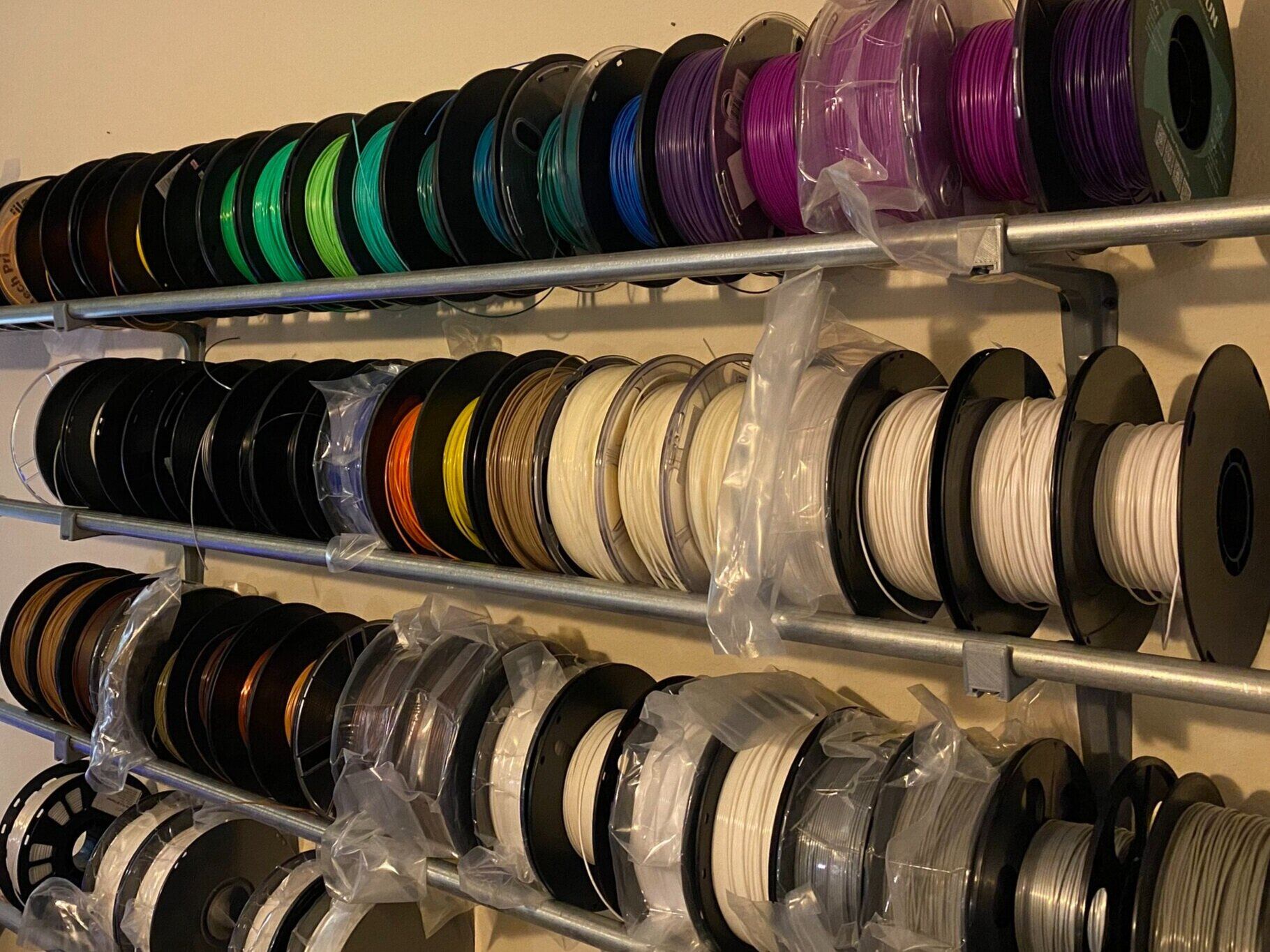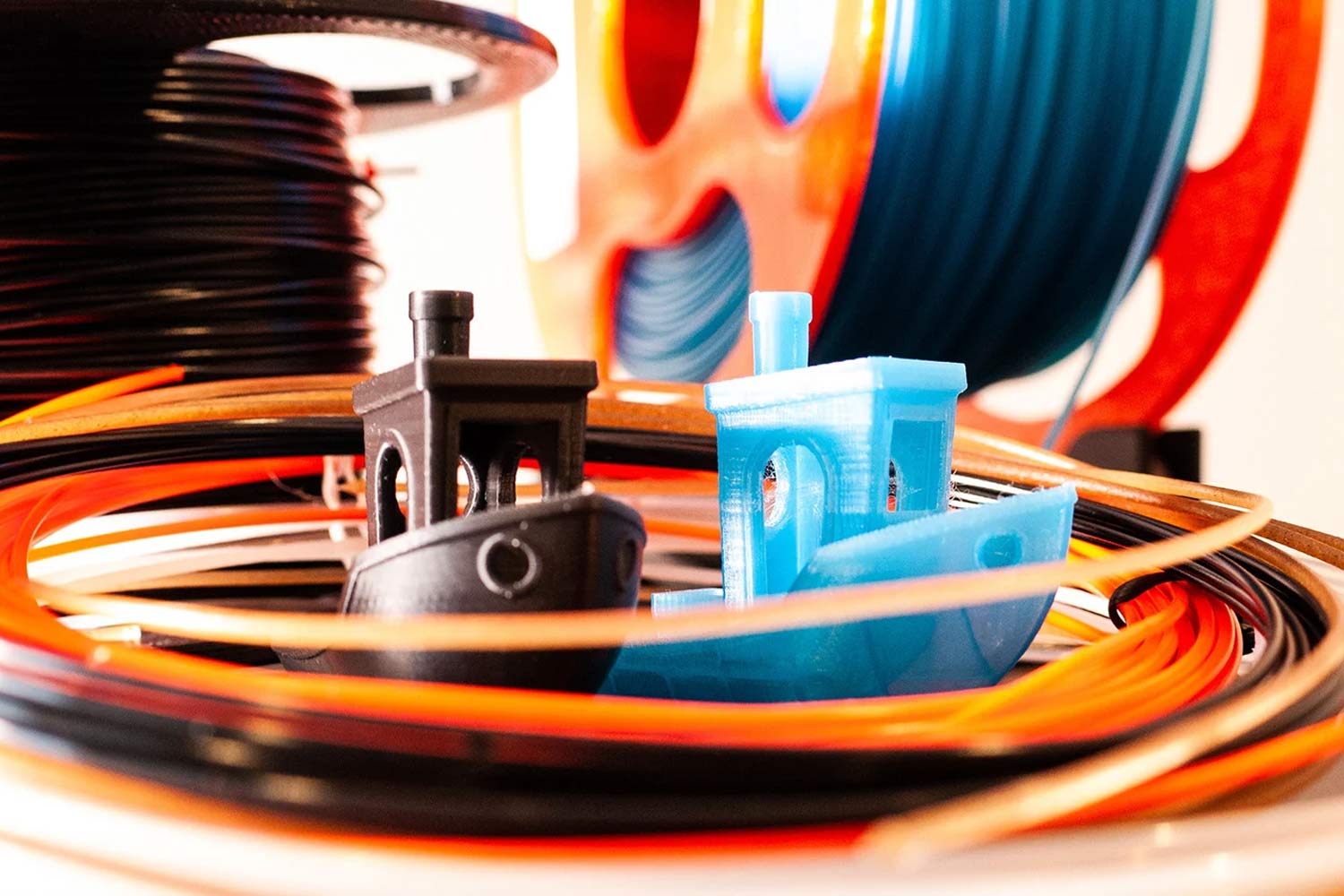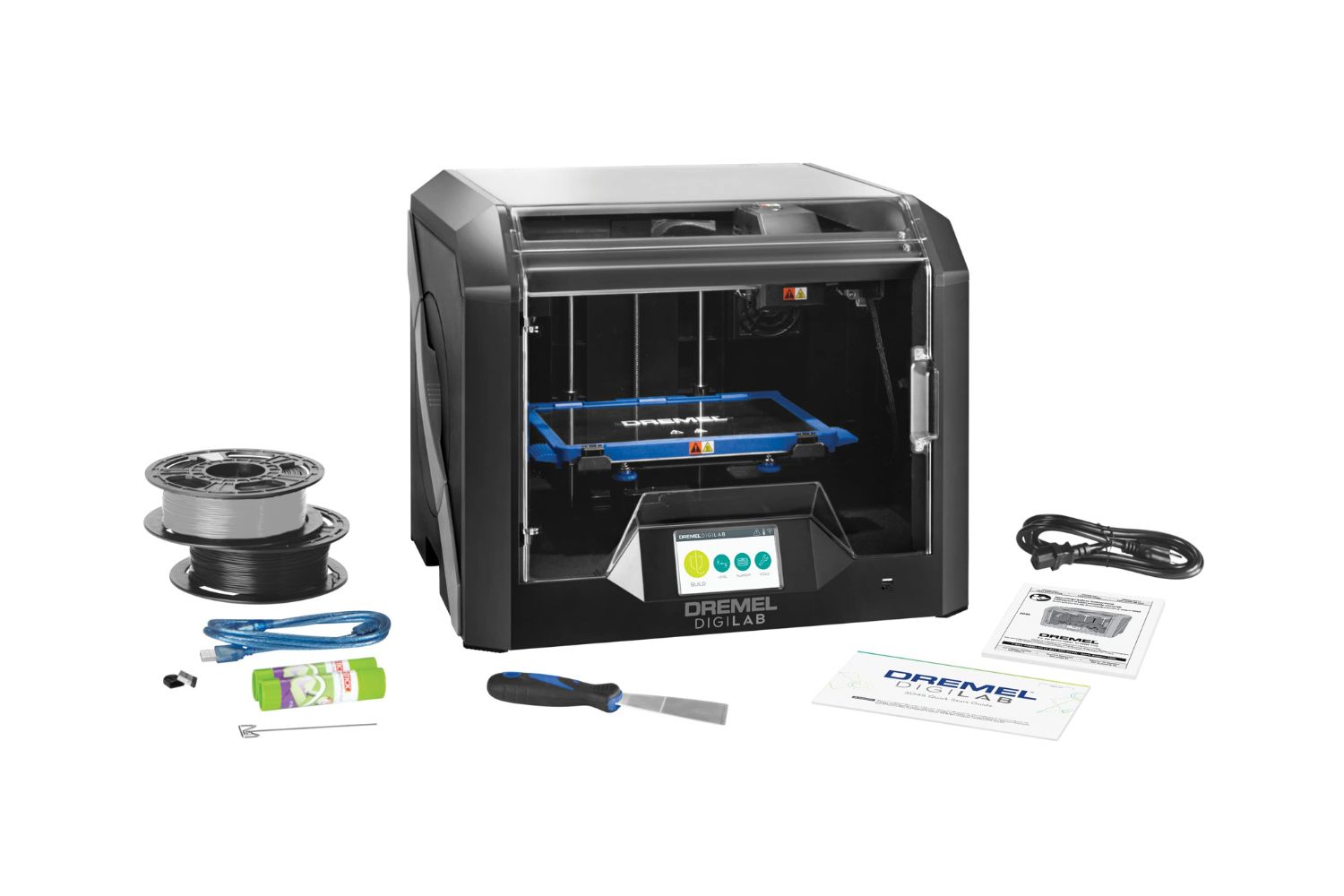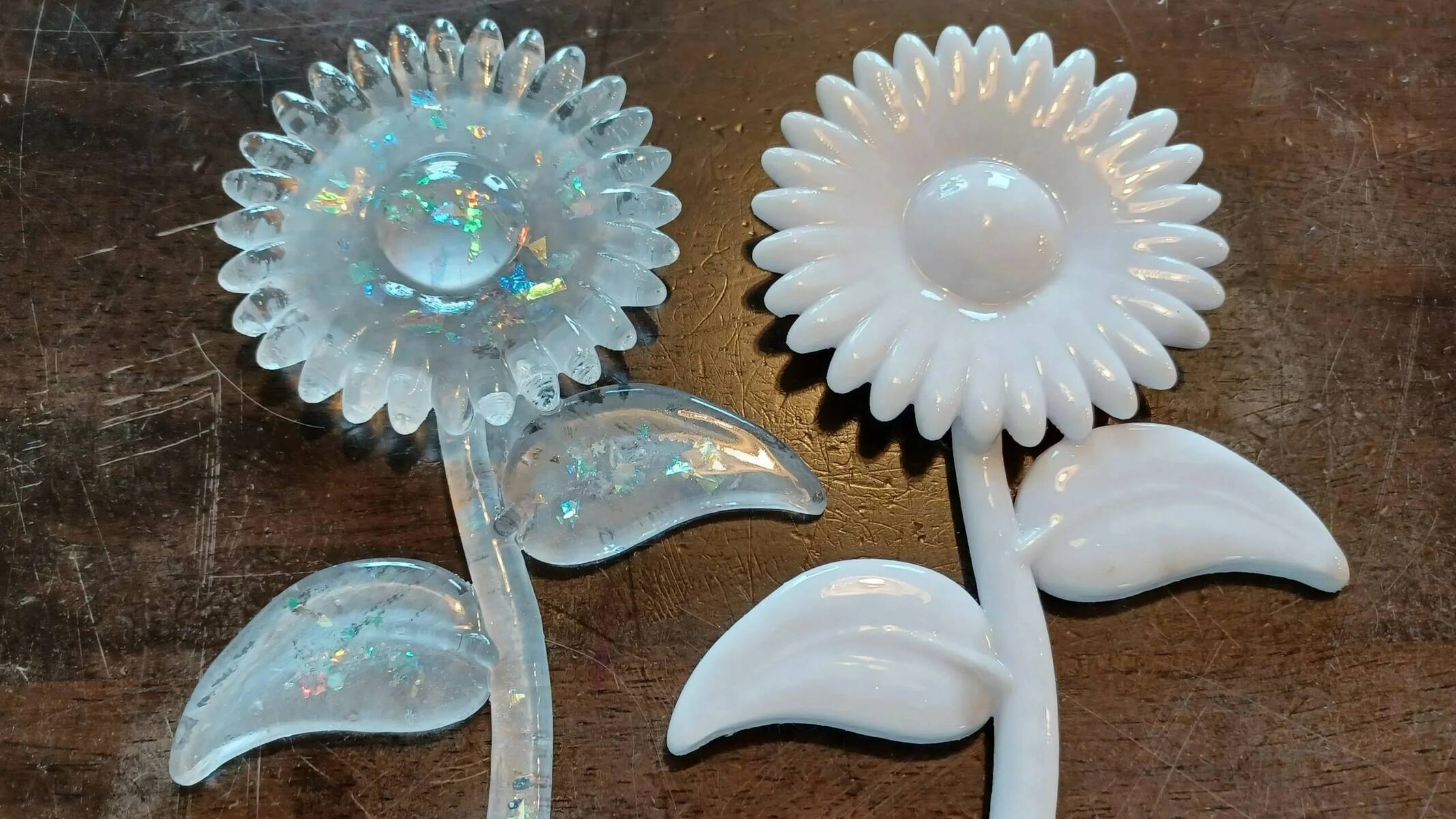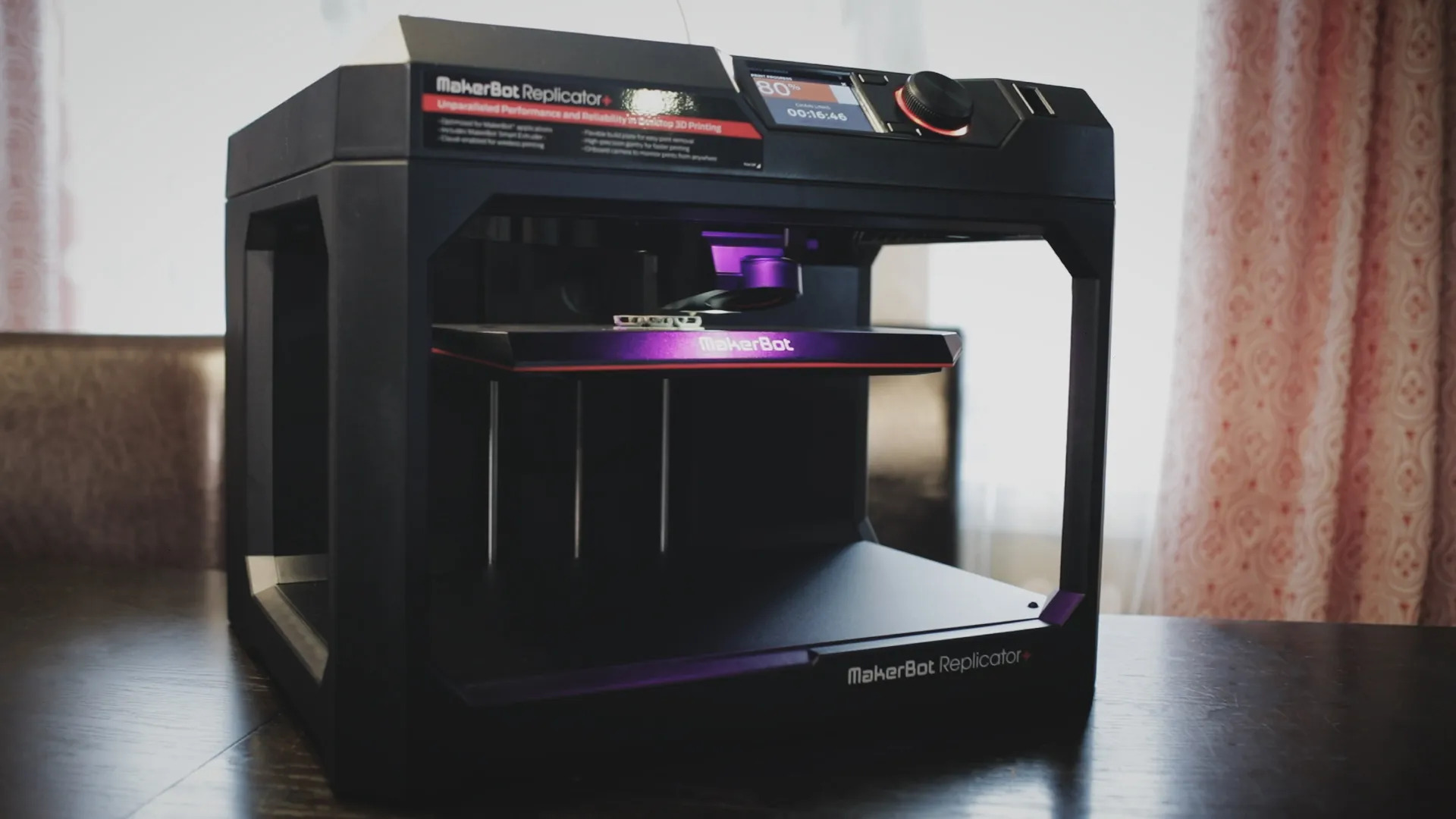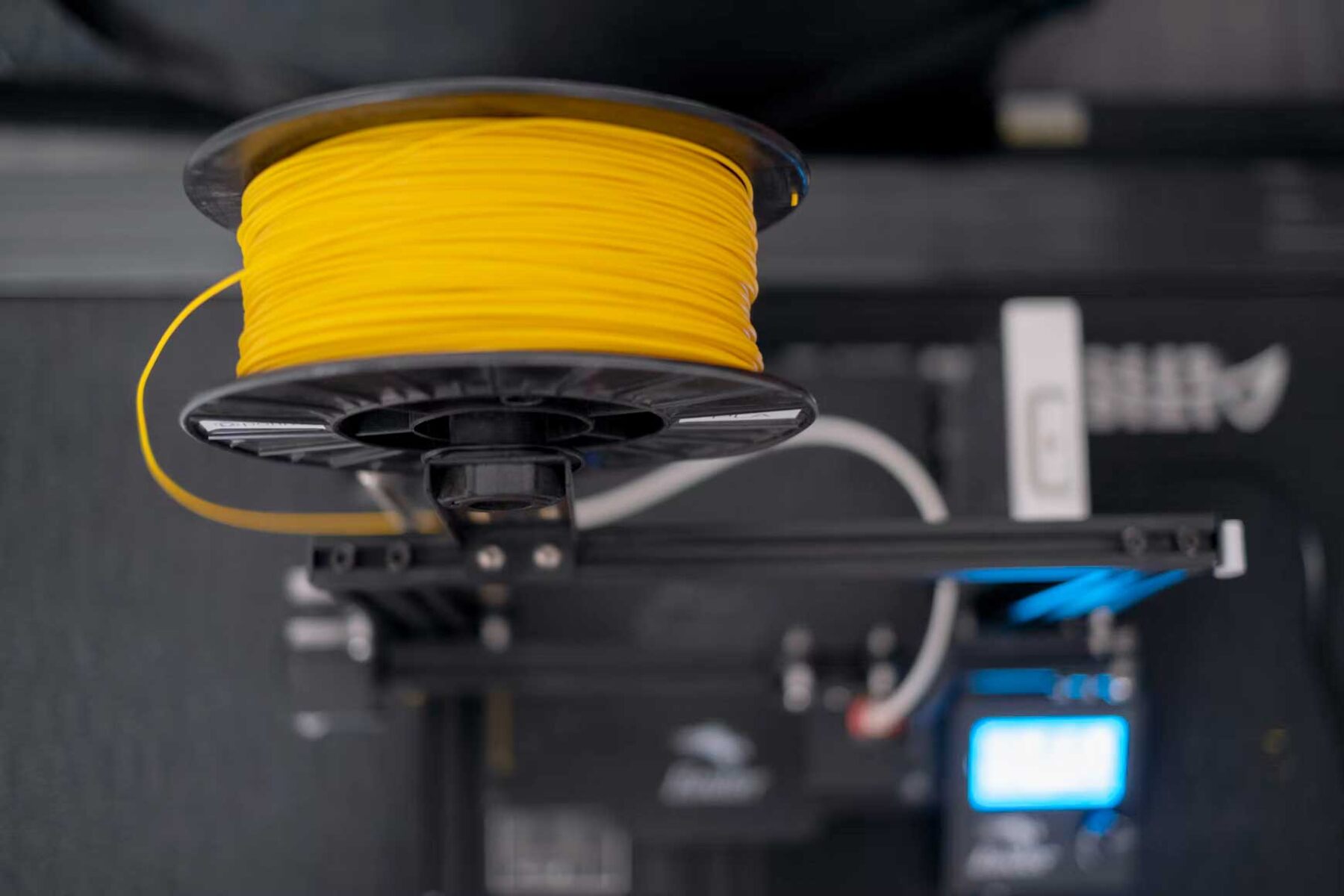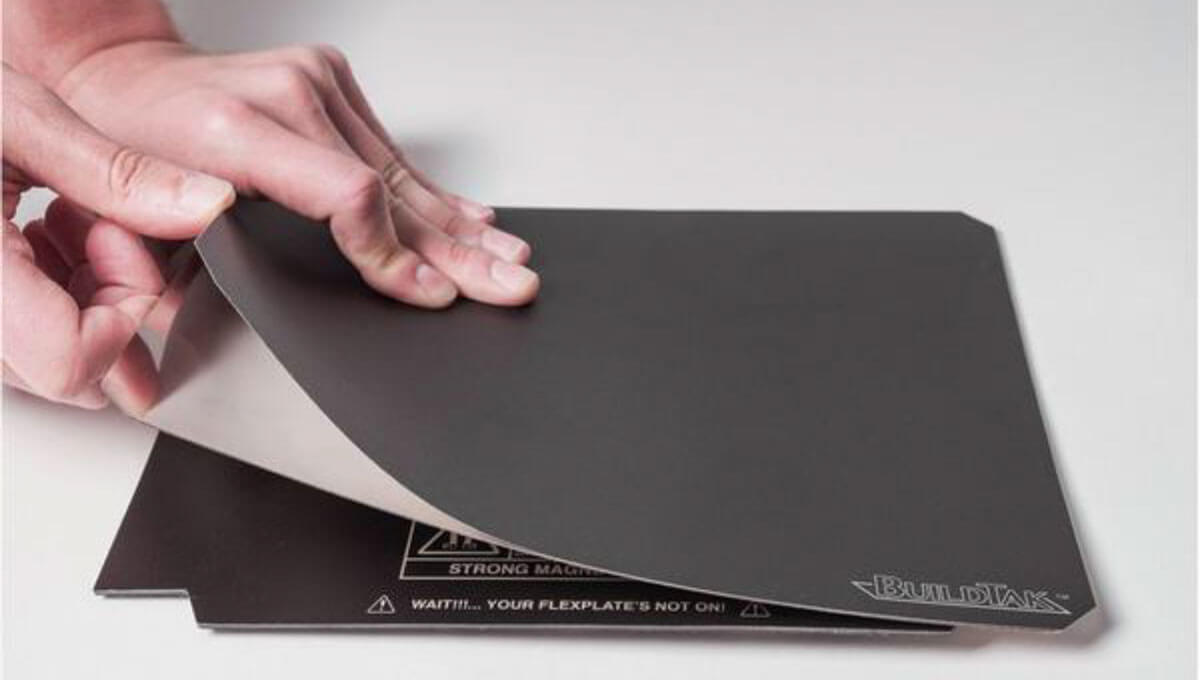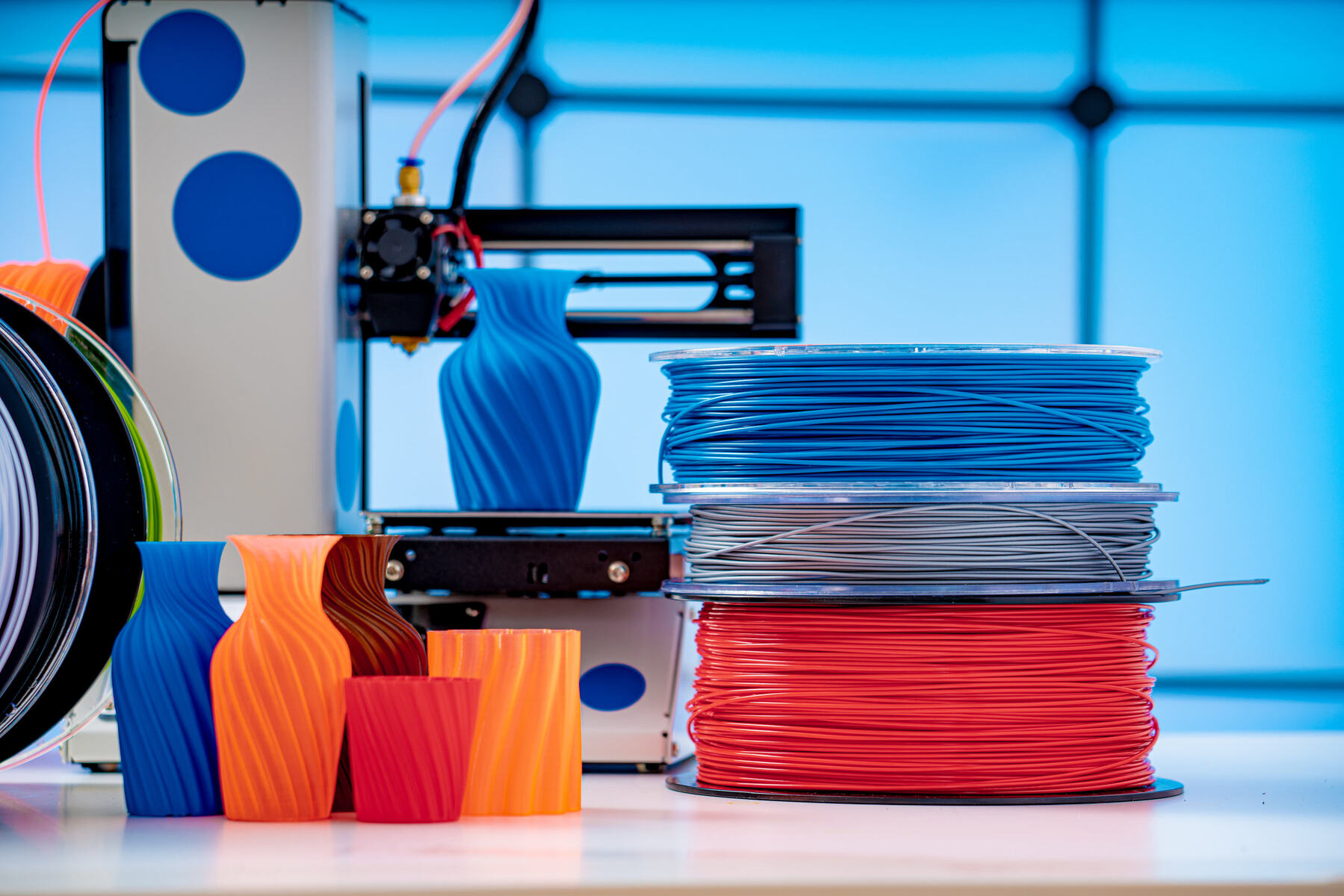Introduction
When it comes to 3D printing, choosing the right filament is crucial for achieving the desired results. The type of filament used not only affects the strength and durability of the printed objects but also determines their appearance and functionality. With a wide range of filaments available in the market, each with its own unique properties, it can be challenging to decide which one is the best for your specific project.
In this article, we will explore some of the most popular types of filaments used in 3D printing, highlighting their characteristics and applications. Whether you are a beginner or an experienced 3D printing enthusiast, this guide will help you make an informed decision about the best filament type to use for your next project.
It’s important to note that the best type of filament for 3D printing largely depends on the specific requirements of your project. Factors such as desired strength, flexibility, temperature resistance, and print quality play a significant role in determining the type of filament that will yield the best results. Additionally, considerations such as cost, availability, and ease of use should also be taken into account.
Before diving into the various types of filaments, it’s worth mentioning that all filaments have their unique advantages and disadvantages. Therefore, it’s essential to thoroughly evaluate your project requirements to find the ideal filament that aligns with your specific needs.
PLA Filament
PLA (Polylactic Acid) filament is one of the most popular and commonly used filaments in 3D printing. It is derived from renewable resources such as cornstarch or sugarcane and is known for its eco-friendly nature. PLA filament has a low melting point, making it easy to print with, even on printers with lower temperature capabilities.
One of the key advantages of PLA filament is its wide range of colors and finishes available, allowing for vibrant and visually appealing prints. It also has minimal warping and produces less odor during printing compared to other filament types. PLA is ideal for creating prototypes, decorative objects, and models.
In terms of mechanical properties, PLA is relatively rigid and brittle compared to other filaments. However, it offers good dimensional accuracy and a smooth surface finish. PLA is not suitable for applications requiring high temperature resistance or mechanical strength, as it tends to soften and deform at temperatures above 60°C (140°F).
Another benefit of PLA is its biodegradability, making it an excellent choice for environmentally conscious individuals. PLA prints can be composted under certain conditions, reducing their impact on the environment.
When using PLA filament, it is recommended to have a heated bed set at around 50-60°C (122-140°F) or to use painter’s tape or a print surface with good adhesion. This helps prevent warping and ensures better print quality.
Overall, PLA filament is a versatile and user-friendly option for 3D printing, especially for beginners or those working on projects that don’t require high mechanical strength or temperature resistance.
ABS Filament
ABS (Acrylonitrile Butadiene Styrene) filament is another widely used filament in 3D printing. It is known for its excellent durability, strength, and impact resistance, making it suitable for functional prototypes, mechanical parts, and even end-use products.
One of the key advantages of ABS filament is its ability to withstand higher temperatures compared to PLA. ABS can withstand temperatures up to 85°C (185°F) without deforming, making it suitable for applications that require heat resistance. It also has better layer adhesion than PLA, resulting in stronger prints.
Unlike PLA, ABS filament requires a heated print bed to prevent warping. The recommended bed temperature varies between 90-110°C (194-230°F). Additionally, using a 3D printer equipped with an enclosed chamber can help ensure better print quality by maintaining a consistent temperature throughout the printing process.
However, one drawback of ABS filament is its potential to emit fumes during printing. These fumes may contain harmful particles, so it is essential to use ABS filament in a well-ventilated area or with a suitable air filtration system. It is also worth noting that ABS filament has a strong odor, which can be a consideration for some users.
ABS prints can be post-processed using techniques such as sanding and acetone vapor smoothing to achieve a smoother and polished finish. Additionally, ABS filament offers good compatibility with various paints and adhesives, allowing for further customization and finishing options.
Overall, ABS filament is a versatile option for projects that require durability, impact resistance, and heat resistance. Its strong mechanical properties and ability to withstand higher temperatures make it a popular choice in various industries, including automotive, aerospace, and engineering.
PETG Filament
PETG (Polyethylene Terephthalate Glycol) filament is a popular choice for 3D printing due to its excellent combination of strength, flexibility, and ease of use. PETG filament is a modified version of PET, commonly used in the production of water bottles and food containers.
One of the main advantages of PETG filament is its high impact resistance, making it suitable for durable and functional prints. It is less brittle than ABS and PLA, and it can withstand moderate mechanical stress without deforming or breaking. This makes PETG well-suited for applications that require strength and toughness, such as mechanical parts, prototypes, and functional objects.
In terms of printability, PETG filament offers better layer adhesion and less warping compared to ABS filament. It also has a lower tendency to shrink during cooling, which contributes to improved dimensional accuracy and reduced printing issues.
PETG filament does not require a heated print bed, although using one at around 50-60°C (122-140°F) can help improve the first layer adhesion. Additionally, PETG has a lower printing temperature compared to ABS, usually ranging from 220-250°C (428-482°F).
Another notable feature of PETG filament is its transparency and excellent optical properties. It allows for clear or translucent prints, making it suitable for projects that require see-through or light-diffusing parts. PETG is also available in a range of colors, providing versatility in design options.
Furthermore, PETG filament is food-safe, as it does not release harmful chemicals or odors during printing. This makes it a suitable choice for printing items that come into contact with food or beverages.
Overall, PETG filament offers a good balance of strength, flexibility, and printability. Its combination of durability, transparency, and food safety makes it a versatile option for a wide range of 3D printing applications.
Nylon Filament
Nylon filament is a versatile and durable material widely used in various industries, including automotive, aerospace, and engineering. It is known for its high strength, flexibility, and excellent impact resistance.
One of the key advantages of nylon filament is its ability to withstand mechanical stress and handle challenging applications. It has a high melting point, making it suitable for projects that require parts that can endure high temperatures. Nylon prints are also resistant to chemicals, oils, and solvents, making them ideal for industrial applications.
When it comes to printability, nylon filament can be more challenging compared to other filaments. It has a higher printing temperature requirement, typically ranging from 240-260°C (464-500°F). Additionally, nylon tends to absorb moisture from the air, which can negatively affect print quality. Proper drying of the filament before printing is crucial to avoid issues such as warping, bubbling, or poor layer adhesion.
Nylon prints also require a heated print bed to minimize warping, with recommended temperatures ranging from 50-70°C (122-158°F). Using a printing enclosure can further enhance the print quality by maintaining a controlled environment and reducing the chance of moisture absorption during printing.
Another characteristic of nylon filament is its ability to be post-processed through techniques like dyeing, sanding, or chemical smoothing. This allows for further customization and finishing options, making it suitable for projects that require specific aesthetics or surface treatments.
It’s worth noting that due to the higher printing temperature and specific printing requirements, nylon filament is more suitable for intermediate or advanced 3D printing users who have experience working with challenging materials.
In summary, nylon filament is a strong and durable material with excellent mechanical properties. Its high temperature resistance, chemical resistance, and flexibility make it an ideal choice for functional prototypes, mechanical parts, and applications that require durability in demanding environments.
TPU Filament
TPU (Thermoplastic Polyurethane) filament is a popular choice for 3D printing when flexibility and elasticity are required. TPU is a flexible and rubber-like material known for its excellent impact resistance, stretchability, and durability.
One of the key advantages of TPU filament is its ability to withstand bending, stretching, and repeated use without breaking or deforming. This makes it suitable for printing objects such as phone cases, footwear parts, wristbands, gaskets, and other functional parts that require flexibility and shock absorption.
TPU filament is also resistant to abrasion, oil, and chemicals, further adding to its durability and versatility. It offers good layer adhesion and produces prints with smooth surfaces, making it an ideal choice for projects that require both functional and visually appealing results.
When it comes to printability, TPU filament requires specific considerations. It is recommended to use a direct-drive extruder or a Bowden-style extruder with good filament feeding mechanisms, as TPU is more flexible and can cause extrusion issues if not properly fed into the printer. Additionally, lowering the printing speed and increasing the retraction distance can help improve print quality and minimize stringing.
TPU filament typically requires a heated print bed, with temperatures around 40-60°C (104-140°F). This helps ensure better adhesion to the build plate and reduce the risk of warping or lifting during printing.
Furthermore, TPU filament is available in various shore hardness values, ranging from softer, more flexible options to firmer, less flexible options. This allows for customization based on the specific flexibility requirements of the project.
Overall, TPU filament is a versatile material that offers excellent flexibility, elasticity, and durability. Its ability to withstand bending and stretching makes it suitable for a wide range of applications requiring flexible and resilient parts.
PVA Filament
PVA (Polyvinyl Alcohol) filament is a water-soluble material primarily used as a support structure in dual extrusion 3D printing. It is compatible with materials such as PLA, allowing for the creation of complex and intricate designs without the need for manual support removal.
One of the main advantages of PVA filament is its ability to dissolve in water, making it easy to remove supports from the printed object. This is especially useful for prints with intricate geometries, overhangs, or internal cavities where traditional support structures would be difficult to remove.
PVA filament has excellent adhesion to PLA and other materials, ensuring proper support during the printing process. It can be used in combination with a wide range of filaments, offering versatility in multi-material prints.
When using PVA filament, it is important to consider the water solubility aspect. The printed object needs to be submerged in water for a period of time, typically several hours or more, to completely dissolve the PVA supports. It is recommended to use lukewarm water for faster dissolution and gentle agitation to facilitate the process.
It’s worth noting that PVA filament is sensitive to moisture absorption, so it should be stored in a dry environment or sealed in an airtight container with desiccant to prevent degradation and maintain optimal print quality.
Since PVA is primarily used for support structures, its own mechanical properties and printability may not be as crucial as when using it as a standalone material. However, it typically requires a lower printing temperature than materials like PLA or ABS, usually ranging from 180-220°C (356-428°F).
PVA filament is an excellent choice for complex prints that require support structures that are easy to remove and leave a smooth surface finish. Its water solubility eliminates the need for tedious and time-consuming manual support removal, making it a valuable solution for intricate designs.
Conductive Filament
Conductive filament is a specialized type of filament infused with conductive additives, usually carbon-based materials, allowing it to conduct electricity. It offers a unique capability to print objects with embedded electronic components or create functional circuits directly on 3D printed models.
One of the key advantages of conductive filament is its ability to conduct electrical current, making it suitable for various applications in electronics, robotics, and prototyping. Conductive filament opens up possibilities for creating touch sensors, capacitive touch buttons, simple circuits, and even small electronic devices.
When using conductive filament, it is essential to have a 3D printer capable of printing at a higher temperature, typically between 200-250°C (392-482°F), to ensure proper melting and adhesion of the filament. Additionally, excellent layer adhesion is crucial to maintain consistent conductivity throughout the print.
Conductive filament prints may require post-processing steps such as sanding or polishing to remove any surface imperfections and ensure a smooth conductive pathway. It is also possible to solder onto the conductive filament to connect other electronic components or create more complex circuits.
It’s important to note that the conductivity of the printed object may vary depending on factors such as the filament composition, print settings, and object design. Conductive filament typically offers resistivity in the range of 10-100 ohm-cm, making it suitable for low-voltage applications.
Conductive filament is a valuable tool for projects that involve incorporating electronics directly into 3D printed objects. It enables a new realm of possibilities for creating functional prototypes, interactive objects, and custom electronic devices.
It’s worth mentioning that the conductivity of the filament may degrade over time due to wear and surface oxidation. Therefore, for applications requiring long-term use or high reliability, other methods such as soldering or using separate electronic components may be more suitable.
Wood Filament
Wood filament is a unique type of filament that contains a mixture of actual wood fibers and a polymer base material, usually PLA. It allows for the creation of 3D prints with a natural wood-like appearance and texture, adding a touch of aesthetic appeal to projects.
One of the key advantages of wood filament is its ability to mimic the look and feel of real wood. The combination of wood fibers and the polymer matrix creates a print with visible wood grain and color variations, giving it a warm and organic aesthetic. It’s an excellent choice for creating decorative items, figurines, furniture prototypes, and other objects that benefit from a natural wood-like appearance.
Wood filament is typically easy to print with and shares many characteristics with PLA filament. It has a relatively low printing temperature range of around 180-220°C (356-428°F), making it compatible with most 3D printers. However, it’s important to note that wood filament may have slightly increased nozzle wear due to the presence of wood particles.
When using wood filament, it’s important to consider the influence of the wood fibers on the print. The wood particles can cause the filament to be less smooth and may result in a rougher surface finish compared to traditional PLA. Sanding and polishing can be done post-printing to enhance the final appearance and smoothness of the object.
Additionally, wood filament may exhibit slight variations in color and grain pattern between different batches, further adding to the organic and natural appearance of the prints.
It’s worth noting that the wood fibers present in the filament can lead to occasional clogging or extrusion issues in the printer. To minimize these risks, it is recommended to use a larger diameter nozzle (0.4mm or larger) and adjust the printing settings accordingly.
Wood filament offers an exciting opportunity to combine the versatility of 3D printing with the timeless beauty of wood. It provides a unique and creative way to incorporate the natural charm of wood into various projects, making it a popular choice for those looking to add a touch of elegance and warmth to their prints.
Conclusion
Choosing the right filament for your 3D printing projects is crucial for achieving the desired results. Each type of filament offers its own unique set of properties, advantages, and considerations. Understanding the characteristics of different filaments helps determine which one is most suitable for your specific needs.
PLA filament is an excellent choice for beginners or projects that don’t require high temperature resistance or mechanical strength. It offers a wide range of colors, easy printability, and eco-friendly properties.
ABS filament provides durability, strength, and heat resistance, making it ideal for functional prototypes and parts that can withstand higher temperatures. However, it requires a heated print bed and proper ventilation due to the fumes it may emit during printing.
PETG filament offers a well-balanced combination of strength, flexibility, and printability. It is resistant to chemicals and can withstand moderate mechanical stress, making it suitable for a variety of applications.
Nylon filament is known for its high strength, flexibility, and resistance to mechanical stress and chemicals. It is a versatile material that works well for projects that require durable and resilient parts.
TPU filament is perfect for applications that require flexibility and elasticity. Its ability to withstand bending and stretching makes it a popular choice for functional parts and impact-resistant objects.
PVA filament is specifically designed for soluble support structures, allowing for easier removal and post-processing of prints. It dissolves in water, making it a great option for complex models and designs.
Conductive filament is suitable for printing objects with embedded electronics or creating functional circuits. It offers the ability to conduct electricity, opening up possibilities for innovative and interactive projects.
Wood filament provides a unique aesthetic with a natural wood-like appearance and texture. It is ideal for creating decorative items and prints that require a warm and organic feel.
Ultimately, the best filament choice depends on the specific requirements of your project, such as strength, flexibility, temperature resistance, and desired aesthetics. Considering factors like printability, post-processing needs, and the printer”s capabilities will help you make an informed decision.
Experimenting with different filaments and understanding their properties will enhance your 3D printing experience and enable you to bring your ideas to life with precision and creativity.







